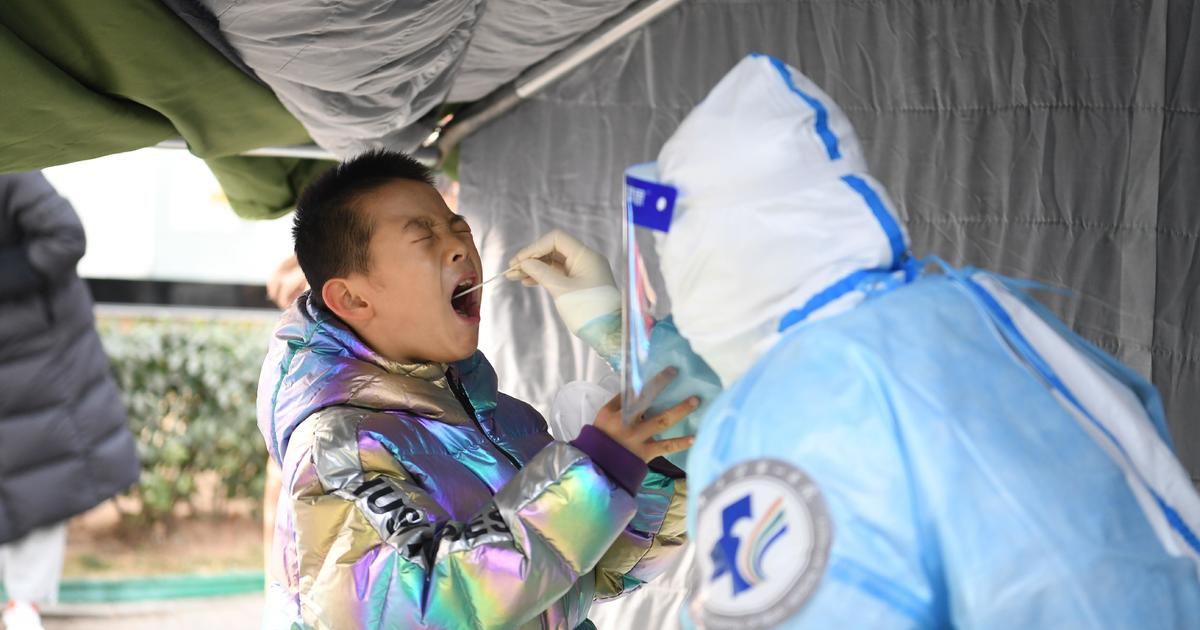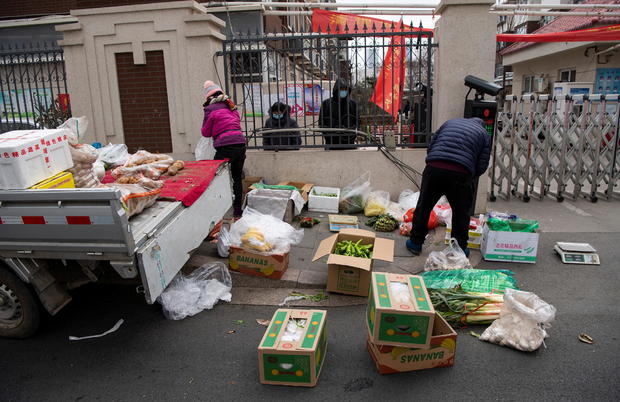Beijing – China is rushing to build a huge quarantine camp with more than 4,000 isolation suites in Hebei province, a region outside Beijing at the center of a resurgence coronavirus Epidemic. Before a holiday that normally unleashes the largest mass movement of humans on the planet, authorities put tens of millions of people under strict blockade in an attempt to stem the spread of COVID-19 a year after its first appearance.
The new isolation center spans more than 108 acres on the outskirts of the city of Shijiazhuang, capital of Hebei province, which surrounds Beijing. It will temporarily house close contacts and secondary contacts of patients confirmed with COVID-19, so that they can be kept under medical observation for any signs of infection.
A time-lapse video broadcast by the state-owned CCTV broadcaster shows construction teams working around the clock to build the huge facility.
Xinhua / Getty
“More than 4,000 construction workers worked six days and nights non-stop” to finish the first batch of 606 rooms, and another 1,173 were completed on Wednesday, according to Shijiazhuang Deputy Mayor Meng Xianghong.
Each room in the quarantine center is about 194 square meters and will have a private bathroom, 5G WiFi and television, as well as tables, chairs and beds, according to state media.
The scenes from the emergency construction project in Shijiazhuang reminded many Chinese of Beijing’s efforts a year ago to build makeshift hospitals in the central city of Wuhan, where the first COVID-19 cases emerged. Two hospitals were fully built in just 12 days.
Xinhua / Zhu Xudong / Getty
But Hebei province is now the epicenter of the coronavirus resurgence in China. More than 800 cases of local transmission have occurred since COVID-19 infections began to emerge again in the country in early January. Over 90% of these new cases were reported in Shijiazhuang.
While the numbers pale compared to outbreaks reaching the US, Britain and other hard-hit countries, China emerged almost completely of the pandemic of just a few weeks ago, and is taking an aggressive approach to controlling new infections.
Shijiazhuang began a third round of mass testing on Wednesday, with the goal of tracking all 11 million residents to COVID-19 in three days. In the meantime, the city is closed, with residents forced to stay at home, with few exceptions.
Chinese Vice Premier Sun Chunlan visited Hebei province this week and visited Shijiazhuang, where she called for quick and resolute action to stem the spread of the disease. She asked Hebei regional authorities to learn the lessons and, specifically, to suspend religious meetings that were accused of fomenting the current spread of the virus.
Health officials in Beijing have confirmed, however, that two cases of highly communicable disease COVID-19 variant first detected in the UK were detected this week in the capital. And on Thursday, the first case of coronavirus transmitted locally in two months was confirmed in the financial center of Shanghai.
The outbreak in Hebei, and cases arising elsewhere, put the Chinese government on edge before the Lunar New Year, which it normally sees hundreds of millions of people travel across the country to be with the family. The two-week vacation period begins in the second week of February.
Tens of millions of people in Hebei, Jilin and Heilongjiang provinces are under strict blocking restrictions, including some 20,000 people who moved last week from villages outside Shijiangzhuang to centralized quarantine centers.
STRINGER / Reuters
Authorities are asking people to avoid traveling during the Lunar New Year holiday. Anyone wishing to return home in a rural area of a Chinese city will have to have a negative result on the COVID-19 test seven days after the trip, the National Health Commission said on Wednesday. Most of China’s 280 million rural migrant workers would normally return to their villages for the New Year holiday.
Beijing officials also said they would extend the mandatory observation period for international travelers arriving in the capital to 28 days, to help prevent the import of new COVID-19 cases, especially the new worrying variants that spread elsewhere.
China has also stepped up its vaccination program, with more than 15 million doses distributed as of Wednesday.



